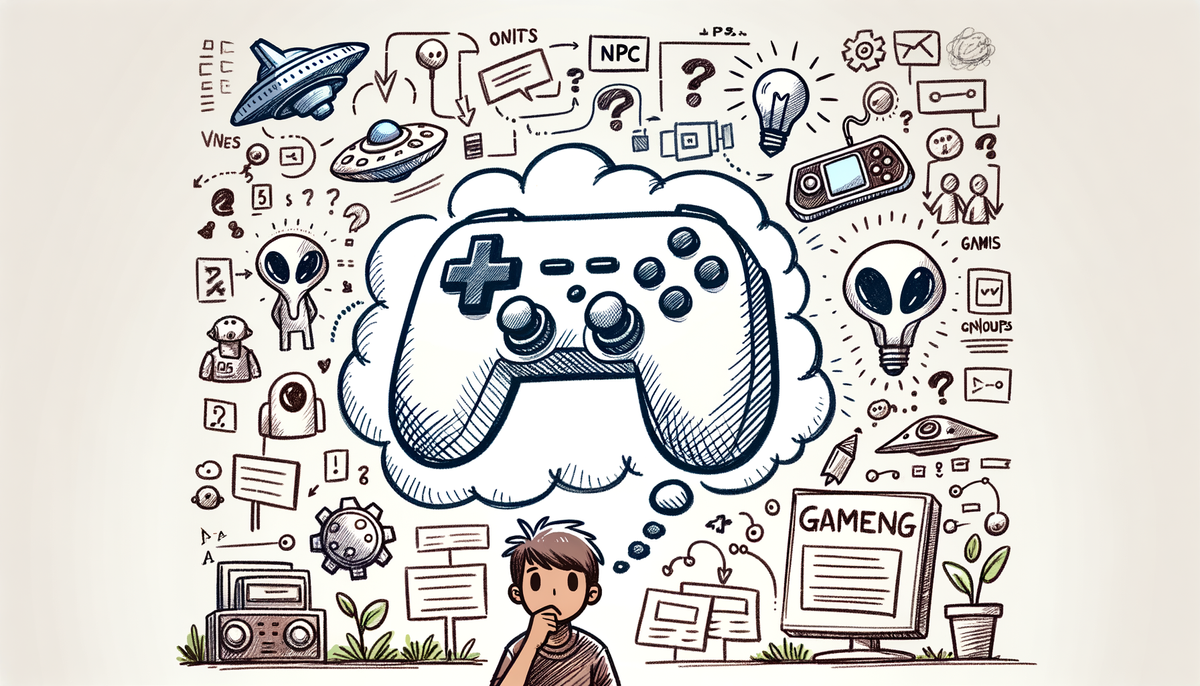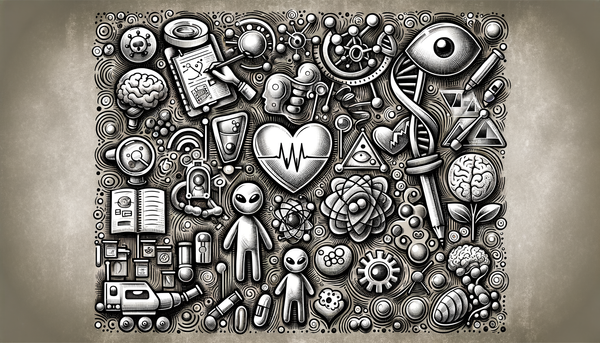Ethical AI in Child Health and Future Trends in Gaming and Healthcare

Innovation often thrives where independence meets a relentless pursuit of better future outcomes—consider a startup that defies traditional fundraising norms while simultaneously reshaping industries from healthcare to gaming, and even redefining global tech rivalries.
Embracing Unorthodox Paths: The Independent AI Startup
One of the more striking developments in the AI ecosystem is emerging from China. DeepSeek, an ambitious AI startup helmed by Liang Wenfeng, is boldly taking a stand by rejecting conventional venture capital funding. With 84% of ownership retained by Liang and his hedge fund, High-Flyer, DeepSeek embodies the notion that technological research need not be shackled by the pressures of quick monetization. This approach is reflective of a broader trend where innovators choose to chart their own course to prioritize long-term research over short-term profit.
Liang’s steadfast commitment to preserving creative and scientific integrity demonstrates both the potential and the pitfalls of operating outside the established funding frameworks. While some argue that venture capital has been a catalyst for explosive growth in tech startups worldwide, DeepSeek’s methodology reminds us that strategic independence can cultivate a research environment where experimental ideas are nurtured without external biases.
In fact, a familiar sentiment from AI expert Fei-Fei Li resonates here:
AI cloud is just very, very nascent.
DeepSeek’s journey reminds us that the very essence of groundbreaking innovation often requires a detachment from mainstream pressures—a sentiment that many young technologists and thinkers on AI.Biz continue to explore.
However, even pioneers face challenges as global conditions evolve. With U.S. export controls on advanced chip technologies tightening, the company finds itself at a crossroads. Rumors of potential collaborations with titans such as Tencent and Alibaba suggest that while current strategies emphasize autonomy, external alliances might become inevitable. This delicate balance between independence and beneficial partnerships will be critical as the startup navigates performance pressures and regulatory scrutiny in a rapidly shifting landscape.
From Vision to Reality: Building AI from “Point A to Point B”
The journey of transforming a conceptual idea into a fully functional AI system is as intellectually demanding as it is exhilarating. In a recent video feature by Bloomberg, industry leaders unpack the fascinating process required to take an idea through the rigorous journey from inception to deployment. The transformation process includes iterative testing, refining algorithms, and overcoming the inherent challenges of integrating complex models into usable technologies.
Watching this progression can be compared to following the arc of a great epic—challenges give way to triumphs and every breakthrough is a step towards a redefined future. The process is reminiscent of classic engineering feats where persistence and careful recalibration are keys to success. In an era where rapid technological changes challenge even the most seasoned experts, the stories of transforming raw AI ideas into tangible solutions serve as inspiration for innovators across sectors.
This topic is particularly relevant for readers who keep up with our feature on various sectors influenced by AI, where a detailed account of such transitions further enriches the discussion on how idea-to-implementation journeys are not just stories of technical evolution but also of human ingenuity and perseverance.
Precision in Healthcare: AI Empowering Personalized Treatment
In healthcare, artificial intelligence is rapidly evolving from a theoretical possibility to a transformative tool in patient treatment. Researchers are now exploring how AI can refine the management of hypertension in diabetes care—a condition where high blood pressure can exacerbate complications for millions globally. By analyzing vast streams of data, including blood pressure readings, lifestyle factors, and genetic predispositions, AI-driven personalized treatment plans promise to enhance patient outcomes in ways that were unimaginable a decade ago.
Imagine a patient whose daily routine, diet, and stress levels are meticulously analyzed by smart systems that tailor therapeutic interventions in real time. The implications extend beyond traditional practices to a future where treatment is both proactive and hyper-personalized. The integration of AI in managing conditions like hypertension does not just improve individual health—it paves the way for healthcare systems to be more efficient, responsive, and patient-centered.
Yet, with great innovation comes equally significant ethical responsibilities. A review published on Nature introduces the Pediatric EthicAl Recommendations List for AI (PEARL-AI), underscoring the ethical complexities when applying AI in child health. Children, fundamentally different from adults in both physiological and developmental needs, require nuanced AI systems designed with care, respect, and caution. The dual focus on precision and ethical integrity is essential to ensure that while AI pushes the boundaries of innovation, it consistently adheres to principles like non-maleficence, beneficence, justice, and respect for autonomy.
This push-pull between applying cutting-edge technology and ensuring that ethical standards are not compromised is a debate that has been echoed by healthcare professionals and technologists alike. The approach to integrating AI in pediatric medicine, showcased in peer-reviewed research, serves as a benchmark for developing technologies that are not only advanced but also socially responsible.
Global Frontlines: AI Competitiveness and the East-West Tech Showdown
The competitive dynamics in the AI landscape are as global as they are intense. An illustrative example is China’s Manus, an emerging force in artificial intelligence agents aimed at rivaling established U.S. tech giants such as Google and Microsoft. With AI agents expected to revolutionize everything from business automation to the way we interact with digital assistants, Manus’s ventures highlight the strategic moves being made on the world stage.
The competitive tension not only spurs innovation but also reflects broader trends in technological self-reliance and state-backed initiatives. As China climbs the technological ladder, the focus has increasingly shifted to invest in domestic talent and advanced research. These actions pose challenging questions for traditional models of global technology leadership, where the balance between innovation, market demands, and regulatory policies is continually renegotiated.
In our ongoing conversation on global AI trends over on AI.Biz, the emerging rivalry emphasizes that competition spurs greater diligence. Rather than falling into escalating conflicts, these dynamics drive collaborative innovations, resulting in products and research that benefit both markets and consumers worldwide.
Innovative Intersections: AI in Gaming and Beyond
The world of gaming, long known for its continuous evolution, is now witnessing a fascinating infusion of AI technologies. Sony’s experiment with an AI-powered version of Aloy from Horizon Forbidden West exemplifies the burgeoning trend of integrating advanced AI in interactive entertainment. In a leaked internal video, Aloy is shown engaging in natural-sounding conversation with players via sophisticated speech recognition and synthesis technologies, leveraging tools such as OpenAI’s Whisper and GPT-4.
This development not only pushes the envelope in character interactivity but also raises interesting questions about the balance between human creativity and machine intelligence. While there is unease about potential impacts on creative jobs—such as those of voice actors and game developers—the innovation hints at a future where AI enhances storytelling and user experience in unprecedented ways.
It is worth noting that AI’s influence in gaming is part of a broader tapestry of rapid technological innovations. Enthusiasts are not only experiencing AI-enhanced characters but are also tapping into advancements in portable gaming. Modern handheld consoles, ranging from the performance-driven ASUS ROG Ally X to the nostalgically appealing Retroid Pocket 5, reflect a market where cutting-edge tech meets everyday entertainment. Although the focus may seem divergent, the underlying theme is consistent: technology is evolving to make experiences richer, more immersive, and more tailored to individual needs.
The integration of AI within the gaming sphere is echoing trends seen across other industries—from healthcare to global enterprise—underscoring the versatility and transformative potential of artificial intelligence. As our readers follow stories on AI’s broad impact, it becomes increasingly clear that the convergence of creativity, innovation, and technology holds the key to tomorrow’s interactive experiences.
Bridging Sectors with AI: Reflections and Future Directions
The examples expounded here—from the independent spirit of DeepSeek to the rigorous journey of transforming AI concepts into operational systems—illustrate the boundless potential and complexity inherent in today’s artificial intelligence landscape. Whether it is revolutionizing healthcare with personalized strategies for managing hypertension in diabetes patients, safeguarding ethical integrity in pediatric medicine, or stirring global competition between tech powerhouses, AI is an interdisciplinary force that continues to disrupt and redefine boundaries.
The role of AI in modern technology is best understood as a tapestry woven from multiple threads of innovation, regulation, competition, and ethical considerations. Each advancement is a story of risks taken and milestones achieved. Consider that as AI penetrates deeper into everyday applications—from personalized health management to intelligent gaming experiences—the priorities of clarity, responsibility, and innovation become even more prominent. This balance between technical capability and ethical oversight is a reminder that the future of AI will rely not only on what machines can do, but also on how humanity chooses to guide their evolution.
As I reflect on this diverse spectrum of AI applications, I am reminded of a line from the movie Big Hero 6: “You are experiencing a car accident. Your airbags have deployed. Remain calm.” This quirky yet profound advice encapsulates the essence of adopting new technologies with both excitement and caution. Innovation may be unpredictable, but a thoughtful, measured approach can ensure that emerging technologies continue to benefit society in meaningful ways.
Further Readings
- Shaping Next Generation AI Users
- Charting the Future of AI in Various Sectors
- AI Updates: Transformations in Shopping, Security, and Healthcare
- Chinese Fund Managers and AI Innovations
As we continue to witness and contribute to the evolution of AI, it is the balance of ingenuity, ethical care, and practical application that defines our era. The journey is ongoing, and each development keeps us on the edge of discovery.



